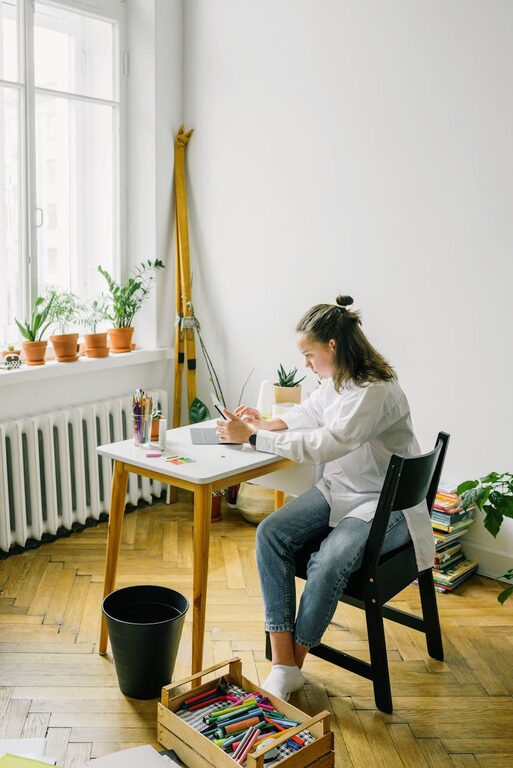Creating a relaxing home workspace is essential for maintaining focus and reducing stress while working remotely. When your environment feels calm and inviting, you’re more likely to stay motivated and productive. Whether you have a dedicated room or just a small corner, you can design a space that supports your work and wellbeing. Below are practical ideas and tips to help you create a soothing, efficient home workspace.
Why a Relaxing Workspace Matters
Your environment greatly influences how you work. A cluttered or uncomfortable space can lead to distractions, anxiety, and burnout. On the other hand, a peaceful workspace encourages concentration and creativity. When you’re relaxed, you can think more clearly and complete tasks with ease. This balance is especially important at home, where the lines between work and personal life often blur.
Choose the Right Location
Consider Natural Light
Pick a spot near a window if possible. Natural light boosts mood and energy, making your workspace feel fresh and airy. Avoid placing your desk directly in front of the window to prevent glare on your computer screen. Instead, position it at an angle or beside the window.
Quiet and Private Areas
Try to select an area that’s away from household noise and distractions. If you share your living space, a quiet corner or a separate room can help you stay focused. Using room dividers or screens can also create a sense of privacy.
Invest in Comfortable Furniture
Ergonomic Chair
A good chair supports your back and encourages good posture. Look for adjustable chairs with lumbar support to reduce strain during long work hours.
Suitable Desk
Your desk should be at a comfortable height with enough surface space for your computer, notebooks, and other essentials. If space is limited, consider wall-mounted desks or foldable options.
Add a Footrest and Cushions
To further improve comfort, use a footrest to align your legs and reduce pressure points. Soft cushions can enhance seating comfort as well.
Declutter and Organize
Keep Essentials Within Reach
Only keep items you use daily on your desk. Store other supplies in drawers or organizers to maintain a clean surface.
Use Storage Solutions
Drawer organizers, shelves, and filing cabinets help keep documents and accessories tidy. Label storage containers to quickly find what you need.
Clear Digital Space
Don’t forget digital clutter! Organize your computer files and email inbox regularly to minimize digital distractions.
Incorporate Relaxing Elements
Add Greenery
Plants bring life and calm to your workspace. They improve air quality and create a soothing atmosphere. Choose easy-care plants like succulents or pothos.
Calming Colors
Select colors that promote relaxation, such as soft blues, greens, or neutral tones. You can paint a wall, use colorful accessories, or add art with these shades.
Personal Touches
Decorate with items that inspire you—photos, quotes, or small mementos. These create a welcoming vibe and help make your space enjoyable.
Control Lighting and Noise
Adjustable Lighting
Invest in a desk lamp with adjustable brightness and color temperature. Warmer light can reduce eye strain in the evenings, while brighter light helps during the day.
Manage Noise Levels
Use noise-cancelling headphones or white noise machines if you’re in a noisy environment. Calm music or ambient sounds can also enhance your focus.
Establish Boundaries and Routines
Set Work Hours
Define specific work hours to separate professional time from personal time. This helps your brain switch between work mode and relaxation.
Create a Start-Up Ritual
Begin your day with a consistent routine, such as a short stretch, meditation, or setting intentions. This signals your mind to prepare for work.
Take Regular Breaks
Schedule short breaks to move around and rest your eyes. Use techniques like the Pomodoro method (25 minutes work, 5 minutes break) to stay refreshed.
Maintain Your Workspace
Clean Regularly
Make a habit of tidying your workspace daily. Wipe surfaces, dust plants, and organize materials to keep the environment inviting.
Update Occasionally
Refresh your space every few months by rearranging furniture, adding new decor, or upgrading equipment. This keeps your workspace stimulating and enjoyable.
—
Creating a relaxing home workspace does not have to be complicated or expensive. By choosing a quiet spot with natural light, investing in comfortable furniture, organizing your essentials, and adding calming touches, you can build an environment that supports productivity and peace of mind. Remember, your workspace is your personal haven to focus and create—make it work for you.

